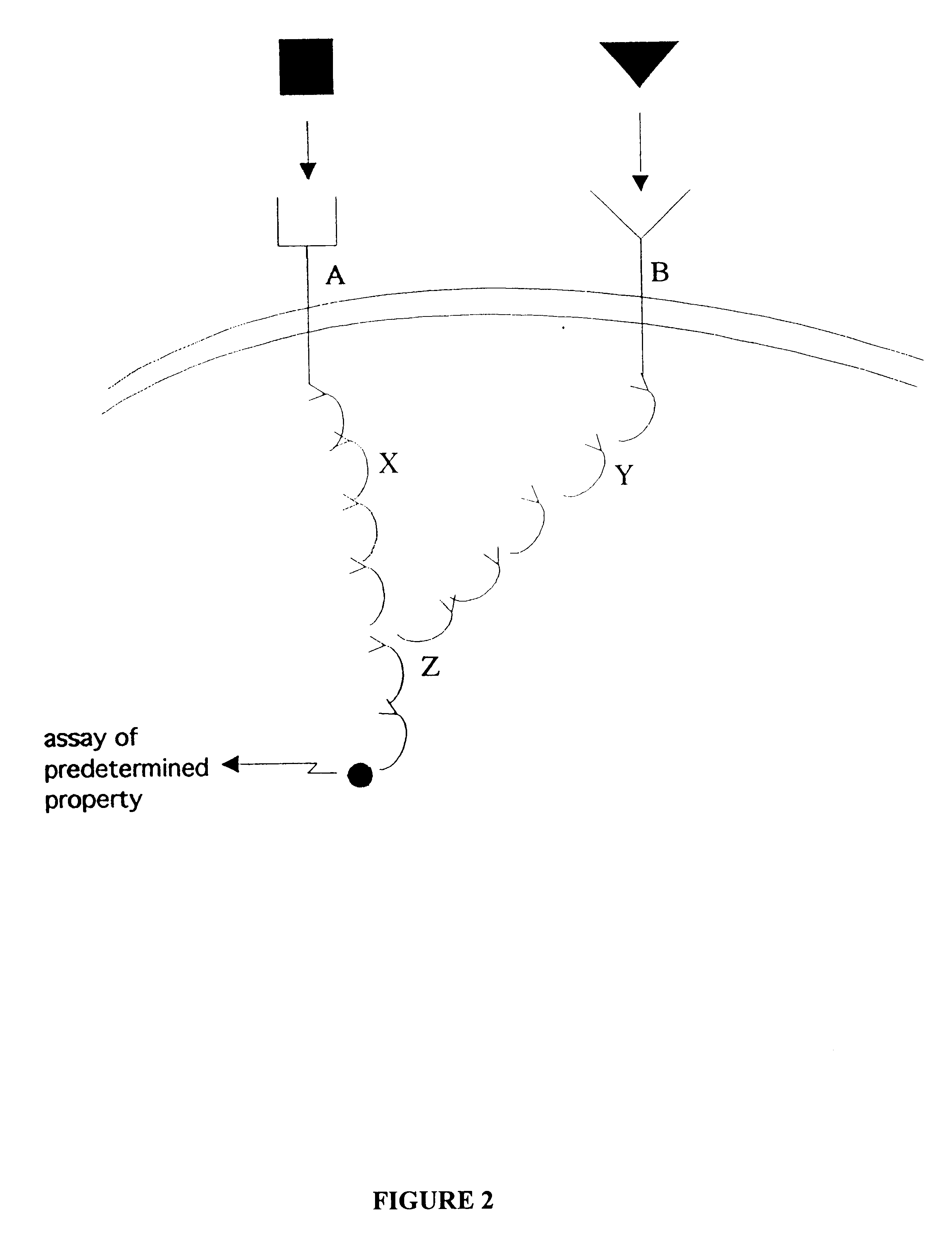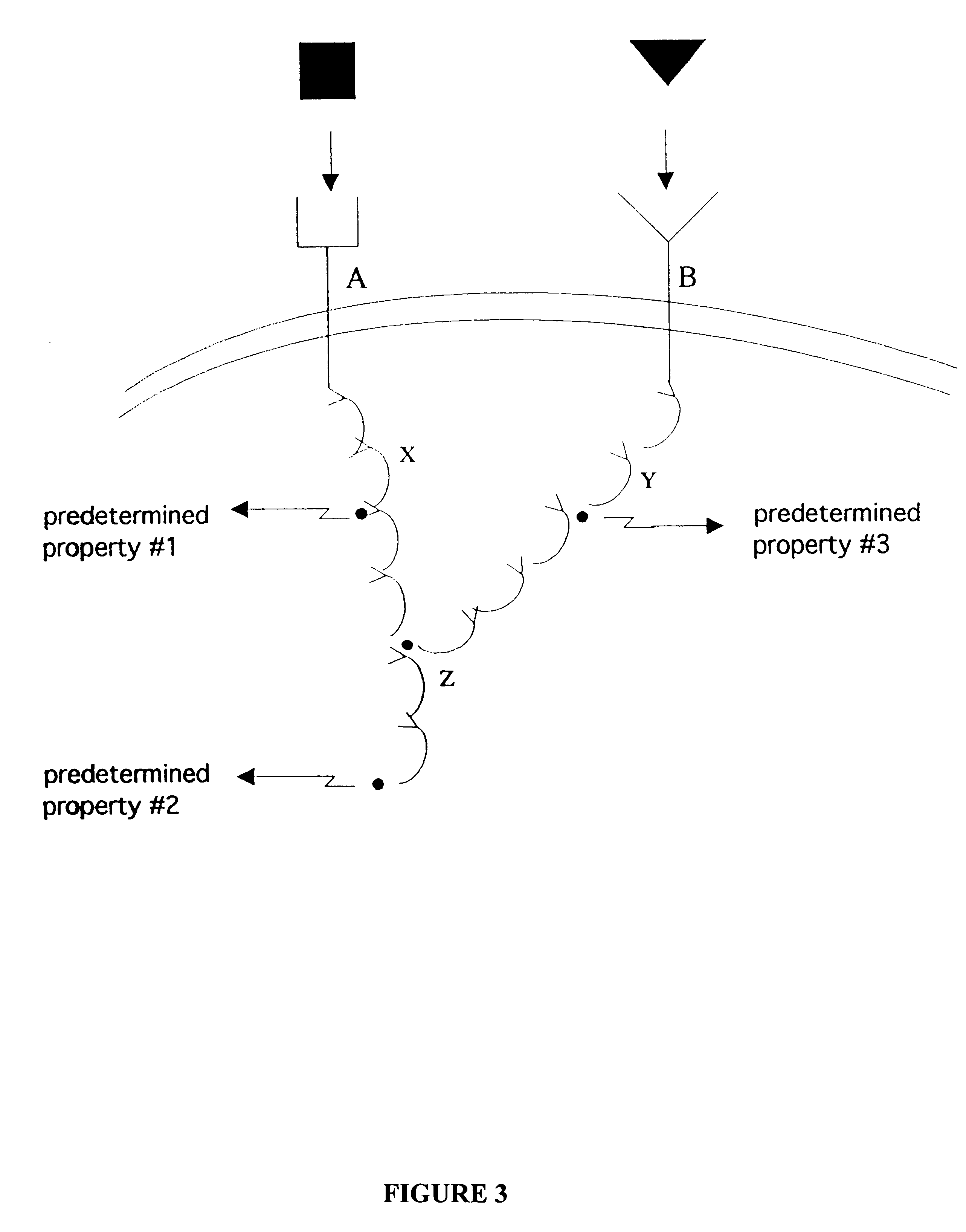Methods of identifying therapeutic compounds in a genetically defined setting
- Summary
- Abstract
- Description
- Claims
- Application Information
AI Technical Summary
Benefits of technology
Problems solved by technology
Method used
Image
Examples
example ii
Identification of Therapeutic Compounds Specific for Different Subtypes of a Pathological Condition
A phenotypically similar pathological condition in individuals of genetically heterogeneous backgrounds can be caused by different underlying molecular mechanisms. For example, as shown in FIG. 1C, a phenotypically similar pathological condition to the pathological condition depicted in FIG. 1B can result from a defect in a different component of the signal transduction pathway, as indicated by the altered (non-square) shape of the ligand. A compound effective in a patient with the type I subtype of the pathology, indicated by a triangle in FIG. 1B, would not be able to restore normal signaling to a cell from a patient with the type II subtype of the pathology, and would not be an effective therapeutic compound for treating the type II subtype of the pathology. However, a compound that allows the defective ligand to interact with the receptor in a cell from a patient with the type II s...
example iii
Development of Combination Therapies
Most cellular functions involve multiple signal transduction pathways. Thus, the response in an assay of a predetermined property often requires the function of several convergent signaling pathways. Such a situation is shown in FIG. 2, where two ligands each bind their own receptor and initiate signaling cascades that converge to produce a signal in an assay of a predetermined property. In this example, the product of gene X, which carries out a process involved in one signaling transduction pathway, is a known disease associated gene. The products of genes Y and Z carry out processes involved in a second signal transduction pathway, and can be considered modifying factors of the effect of gene product X in an assay of a predetermined property.
In a genetically homogeneous population in which the diseased individuals have disease allele X, and normal individuals have wild-type allele X, the activities of gene products Y and Z are likely to be cons...
example iv
Pathway Mapping of Disease-Associated Genes
In searching for a genetic basis for disease, methods have been developed to scan the genes of multiple individuals in a pedigree and to associate a marker on a locus with the disease history of the members of the pedigree. Such association are then used to map the disease-associated genes to a particular locus. The methods described herein can be used in a similar manner to map disease-associated genes to a "locus" of a signal transduction pathway.
As described herein, assays are known in the art that can be used to measure a predetermined property indicative of an alteration in any step of a signaling pathway, such as receptor / ligand interaction, second messenger signaling, phosphorylation events, gene expression and the like. For example, as shown in FIG. 3, three different predetermined properties representing three different loci within of a signaling pathway can be assayed. In a genetically homogeneous population, normal individuals an...
PUM
| Property | Measurement | Unit |
|---|---|---|
| Adhesion strength | aaaaa | aaaaa |
| Therapeutic | aaaaa | aaaaa |
Abstract
Description
Claims
Application Information
 Login to View More
Login to View More - R&D
- Intellectual Property
- Life Sciences
- Materials
- Tech Scout
- Unparalleled Data Quality
- Higher Quality Content
- 60% Fewer Hallucinations
Browse by: Latest US Patents, China's latest patents, Technical Efficacy Thesaurus, Application Domain, Technology Topic, Popular Technical Reports.
© 2025 PatSnap. All rights reserved.Legal|Privacy policy|Modern Slavery Act Transparency Statement|Sitemap|About US| Contact US: help@patsnap.com



